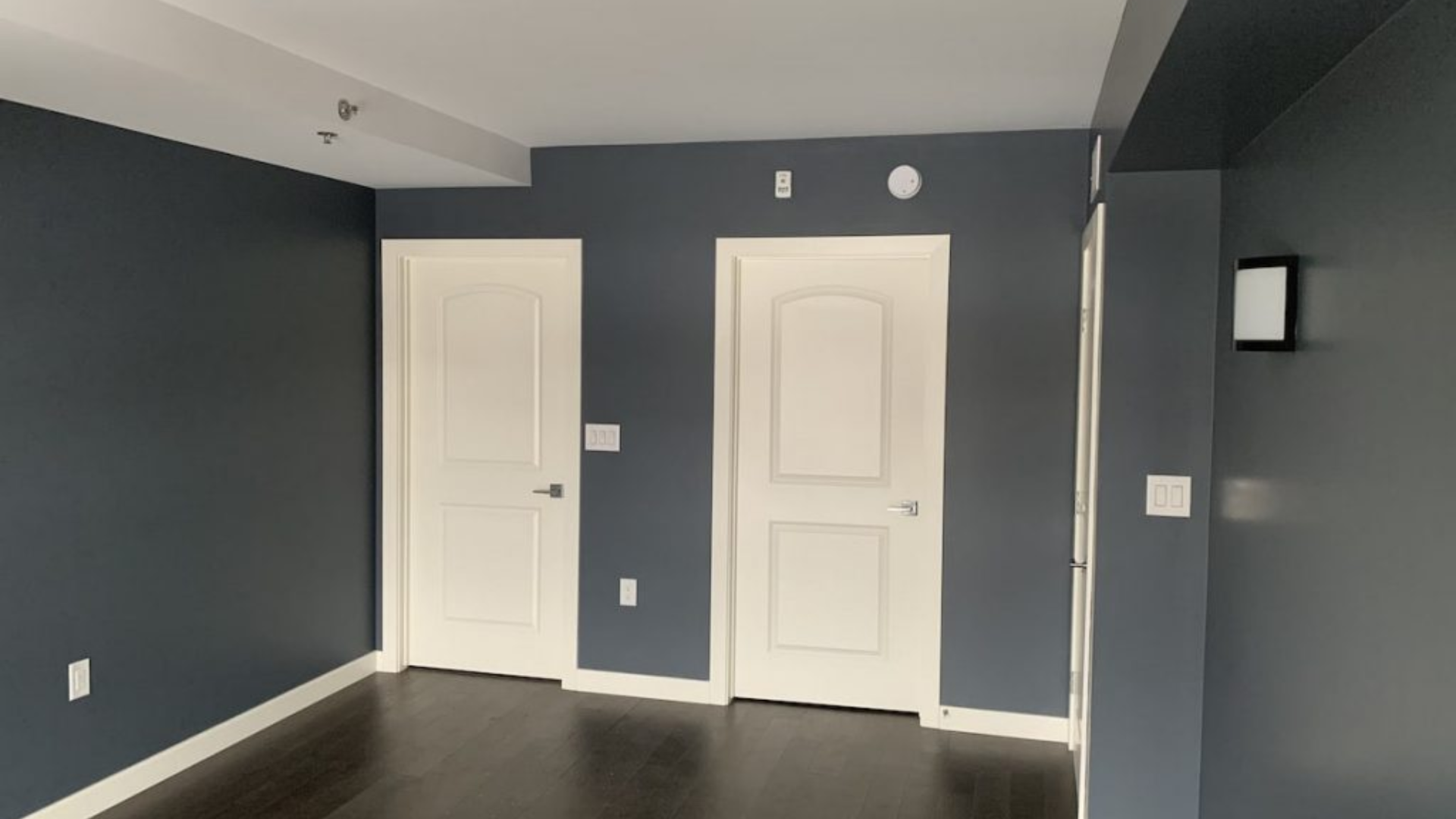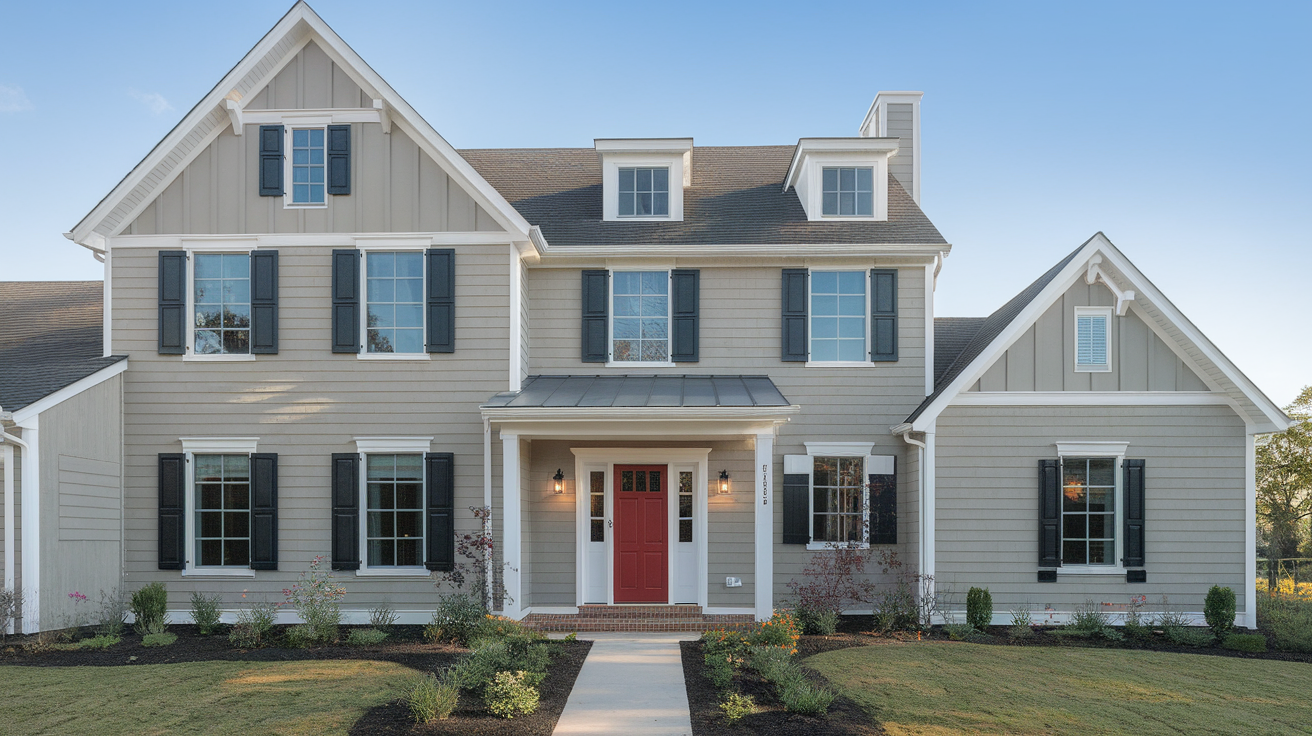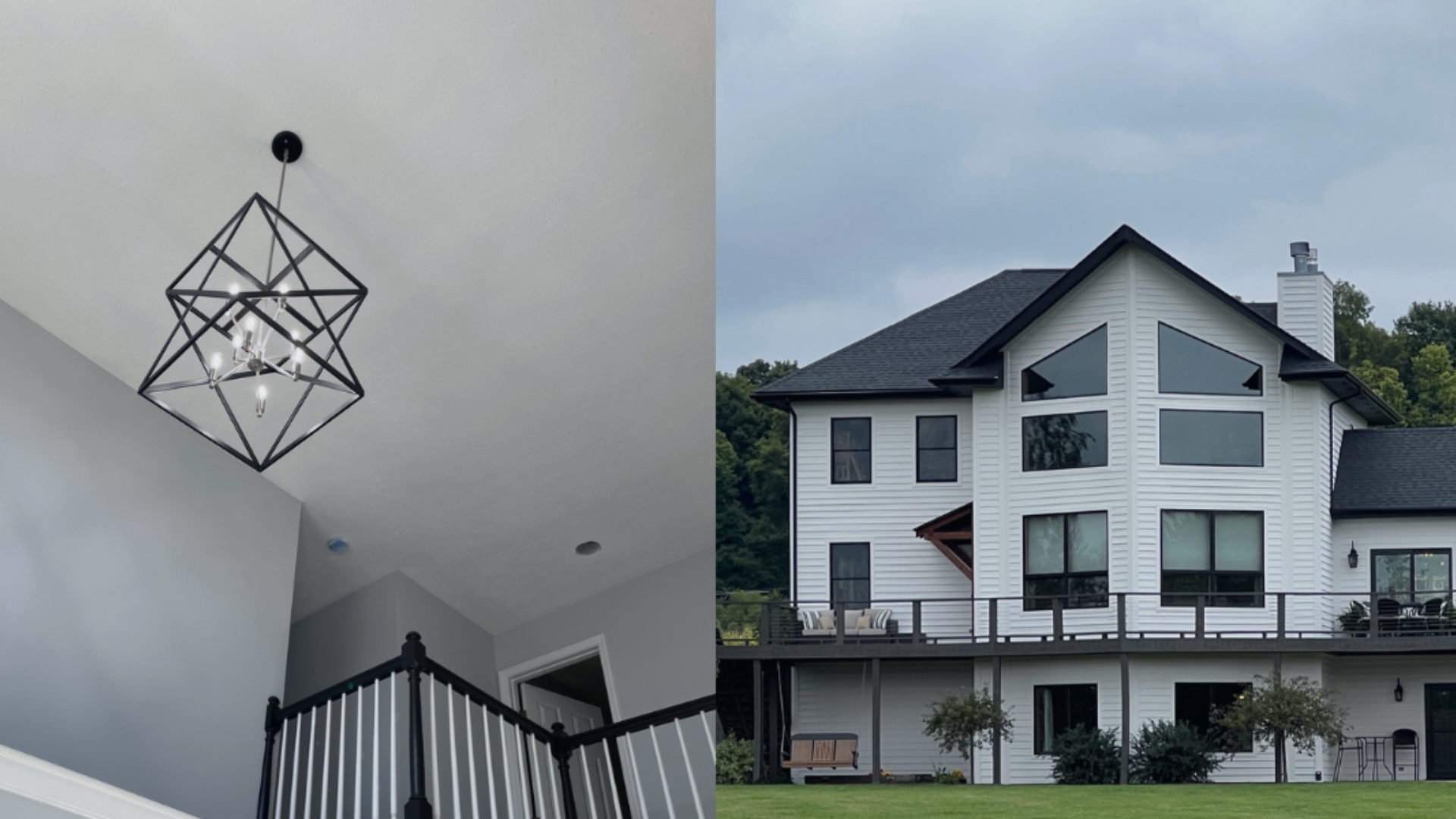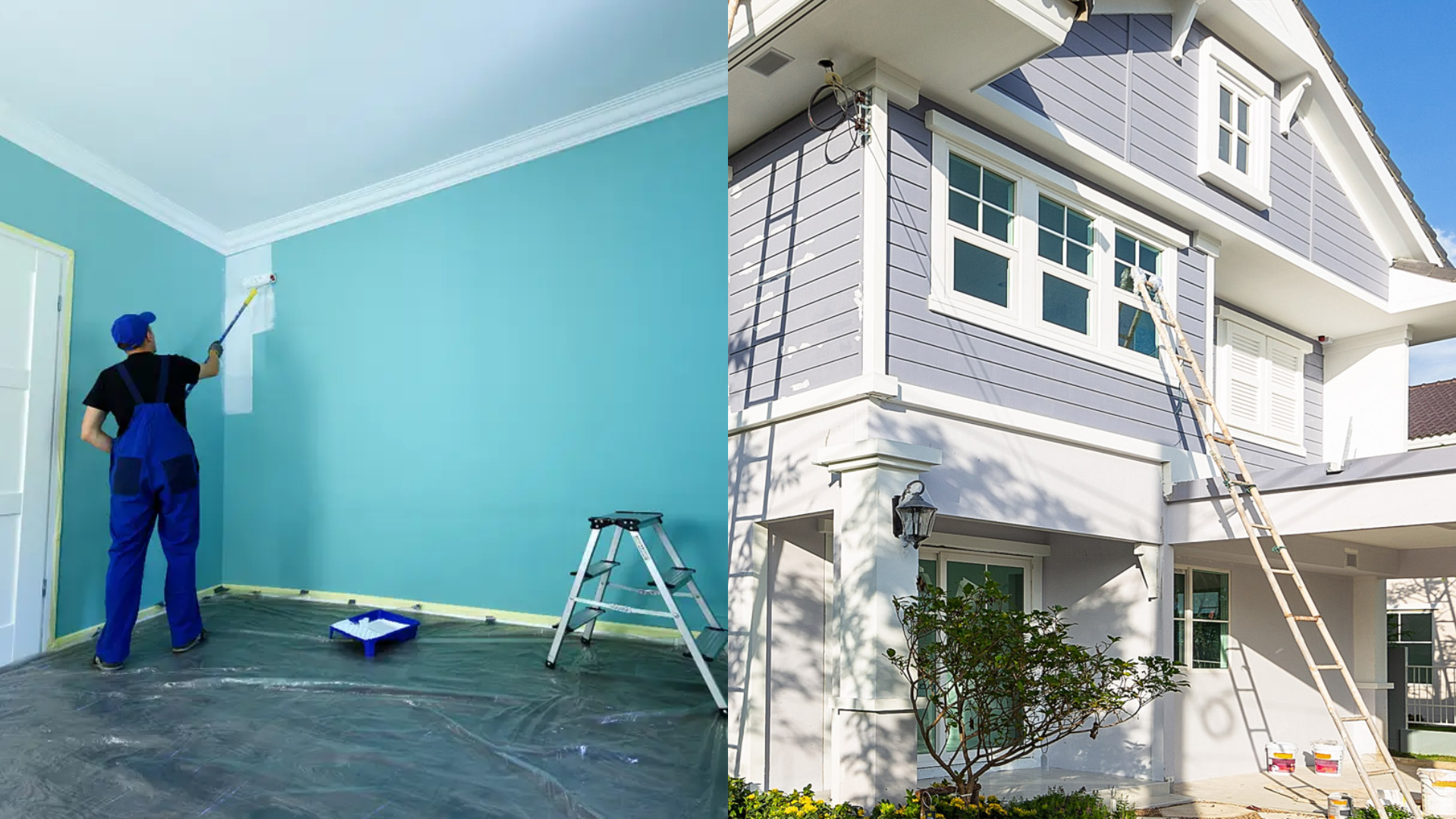I’ve been there, staring at a nearly full can of interior paint after a bedroom makeover and thinking, “Can this go on the shed out back?” It seems like a smart way to save time and money.
But interior and exterior paints are designed for very different environments.
Interior paints focus on being easy to clean and safe to breathe, while exterior paints are made to withstand sun, rain, wind, and temperature changes.
Many homeowners, like me, consider using extra interior paint outdoors, especially for small projects like a garden bench.
Before doing so, it’s important to understand the risks and limitations of using interior paint outside.
Interior Paint Overview

Interior paint is designed for comfort, appearance, and indoor safety. It’s meant for walls, ceilings, and trim inside your home, away from harsh weather, sunlight, or moisture.
One of its strengths is a smooth, washable finish that handles everyday wear like scuffs and spills. Unlike exterior paint, it lacks chemicals like mildewcides or UV protectants.
Formulated with low or zero VOCs, interior paint has less odor and is safer in enclosed spaces. It also dries faster and is easier to touch up.
Available in various sheens and colors, it’s perfect for customizing indoor rooms but lacks the durability for outdoor use.
Exterior Paint Overview

Exterior paint is designed to withstand harsh weather conditions, from UV rays and rain to extreme temperatures and humidity.
It contains flexible resins that expand and contract with changing weather, preventing cracks and peeling.
Additives like mildewcides and UV blockers protect against mold, mildew, fading, and damage from the sun and moisture. This makes it ideal for siding, decks, trim, and outdoor furniture.
While exterior paint may cost more upfront, its durability saves time and money by reducing the need for frequent repainting or repairs.
Key Differences Between Interior and Exterior Paint

Interior and exterior paints differ in formulation, durability, and purpose, each designed to perform best in its specific environment.
1. Chemical Formulation
Interior paints are formulated for durability within your home. They’re made to resist scuffs, stains, and daily wear while being easy to clean.
These paints also have low or zero VOCs, which makes them safer to use in enclosed spaces.
You’ll often find them in living rooms, bedrooms, and hallways where consistent temperature and minimal moisture are the norm.
Exterior paints are designed for survival in harsh outdoor conditions.
They include UV inhibitors to prevent fading from sunlight, flexible resins that help the paint stretch and contract with temperature changes, and mildewcides to stop mold and mildew from forming.
These chemical additives give exterior paint the strength to handle wind, rain, snow, and sun without breaking down.
2. Pigments and Binders
Interior paint uses standard pigments that work well in spaces not exposed to sunlight or moisture. These pigments are stable indoors but can fade quickly when exposed to UV rays.
The binders in interior paint are made to stay firm and provide a smooth, washable finish, but they don’t flex well with environmental changes like temperature or humidity.
Exterior-grade pigments are specifically chosen to resist fading and discoloration, even after years of exposure to the elements.
These paints also contain flexible binders that allow them to expand and contract as outside temperatures shift.
This flexibility helps the paint stay intact and reduces the risk of cracking, peeling, or bubbling in outdoor environments.
Interior vs. Exterior Paint: Quick Comparison
This table highlights the key differences between interior and exterior paint to help you understand why each is best suited for its specific environment.
| Feature | Interior Paint | Exterior Paint |
|---|---|---|
| Durability | Designed for low-impact, indoor environments | Built to withstand sun, rain, wind, and temperature swings |
| UV Protection | None or very limited | Contains UV blockers to resist fading |
| Flexibility | Rigid, not made to expand or contract | Flexible resins prevent cracking and peeling |
| Moisture Resistance | Low- can peel or bubble with moisture | Highly formulated to resist water and humidity |
| Mold/Mildew Resistance | Typically not included | Contains mildewcides to prevent growth |
| VOC Levels | Low or zero for indoor air safety | Usually higher VOCs (not recommended indoors) |
| Finish | Smooth, easy to clean, stain-resistant | Tough, weatherproof, less smooth |
| Longevity Outdoors | Short-lived- fades and peels quickly | Long-lasting with proper prep |
| Cost | Generally lower | Slightly higher due to specialized ingredients |
| Best Use | Interior walls, ceilings, and trim | Exterior siding, fences, decks, doors, and trim |
Can You Use Interior Paint Outside?
Using interior paint outside may seem convenient, especially with leftovers from an indoor project, but it’s not a good long-term solution.
Interior paint lacks UV protection, flexible resins, and moisture resistance, key ingredients for outdoor durability. When used outdoors, it can fade, crack, peel, or grow mold.
While it may look fine at first, interior paint won’t last and could lead to more repainting sooner than expected.
For any surface exposed to the elements, it’s always best to choose paint designed for outdoor conditions.
Risks of Using Interior Paint Outside
Using interior paint on exterior surfaces may seem like a quick fix, but it lacks the necessary additives and protection to handle outdoor elements, leading to early failure and increased maintenance.
- Interior paint lacks UV inhibitors, so it fades quickly in sunlight.
- It doesn’t resist rain, humidity, or temperature changes.
- Outdoor exposure can cause interior paint to crack, peel, or discolor.
- It has poor adhesion on exterior surfaces and may blister or chalk.
- Interior paint doesn’t flex with expanding or contracting materials.
- Most paint warranties are voided if used improperly.
- You’ll likely need to repaint or touch up within 2–5 years.
- Frequent maintenance increases long-term cost and effort.
What Happens If You Already Used Interior Paint Outside?
If you’ve already used interior paint on an outdoor surface, here’s what you might start noticing:
- Fading: The paint may begin to lose its color when exposed to sunlight.
- Chalky Residue: Sun and rain can cause the paint to break down, leaving a powdery finish.
- Peeling Edges: As the paint wears, edges may begin to peel away.
- Bubbling: Moisture exposure can cause the paint to bubble in certain areas.
- Cracking and Flaking: Over time, the paint can crack and peel, exposing the surface to further damage.
To fix this, you’ll need to scrape or sand off the interior paint, apply an exterior-grade primer, and repaint with the proper exterior paint. While it’s extra work, making the switch early can help avoid bigger problems down the road.
Alternatives and Best Practices
If you’re thinking about painting an outdoor surface, choosing the right product from the start makes a big difference.
- Use Proper Exterior Paint: Designed and tested for UV exposure, rain, humidity, and shifting temperatures.
- Durability Matters: Exterior paints include flexible resins to resist cracking and peeling outdoors.
- Fade Resistance: High-quality pigments in exterior paint help preserve color under intense sunlight.
- Find Dual‑Use Paints: Some specialty paints are rated for both interior and exterior use, ideal for doors, trims, or small projects.
- Hybrid Options: These paints offer decent weather resistance while keeping VOCs manageable indoors.
- Eco‑ and Health‑Concerns: Exterior paints often contain higher VOCs, making them unsuitable for indoor use.
- Use the Right Paint in the Right Place: Interior paint lacks the protective additives needed to survive outside.
- Air Quality Matters: Low-VOC interior paints are safer for indoor air, but break down fast outdoors.
Conclusion
After working with both types of paint, I’ve learned that using interior paint outside just doesn’t hold up. It might look fine for a little while, especially in covered or low-exposure areas, but it won’t last.
Sunlight, rain, and temperature swings will take a toll fast, causing peeling, fading, and cracking before you know it. Interior paint simply isn’t made for outdoor conditions.
If you want your project to stand the test of time, it’s worth investing in the right product from the start.
Exterior-grade paint is built to handle the elements, and dual-use options can work well for things like doors and trim.
Don’t waste time and money repainting every year. Make a smart choice from the beginning, and your finish will last much longer.
Frequently Asked Questions
Can I seal interior paint to make it work outside?
You can try using a clear exterior-grade sealer over interior paint, but it’s not a long-term solution. The paint underneath still isn’t designed to handle outdoor conditions, and the sealer may yellow or fail over time.
What happens if I accidentally use interior paint outside?
You’ll likely start to see signs of wear like fading, cracking, or peeling within a few months. If the paint is still intact, you can try recoating it with an exterior primer and proper exterior paint.
Are there any paints safe for both interior and exterior use?
Yes, some specialty or hybrid paints are formulated for both environments. These are commonly used on doors, trims, and surfaces that transition between indoor and outdoor spaces.

